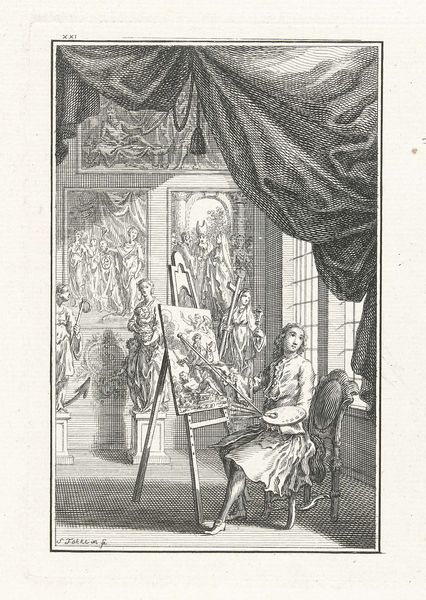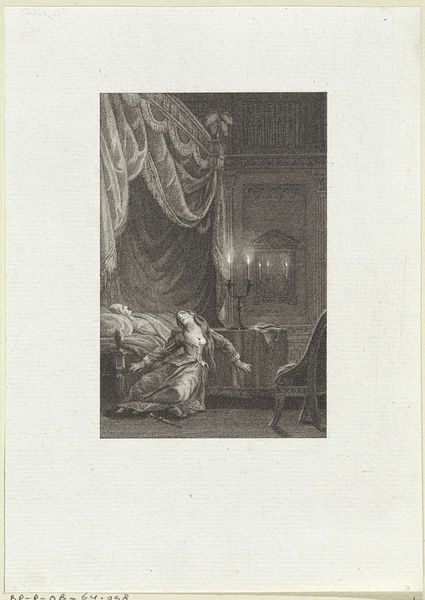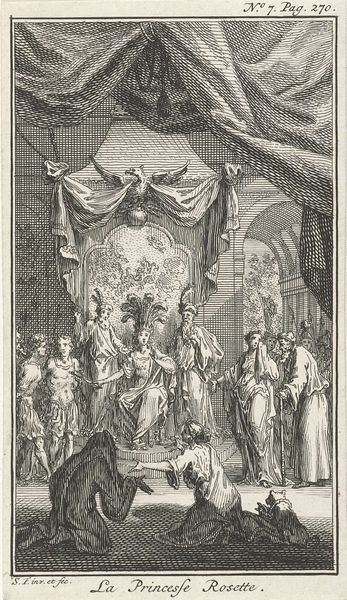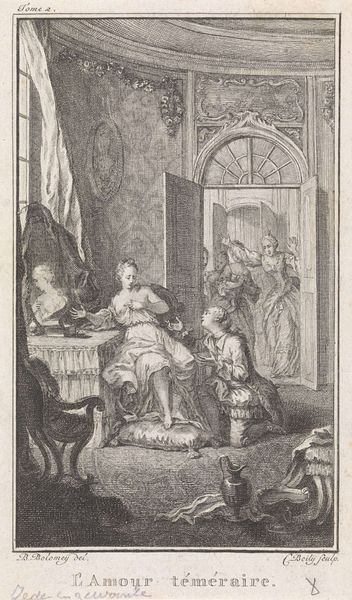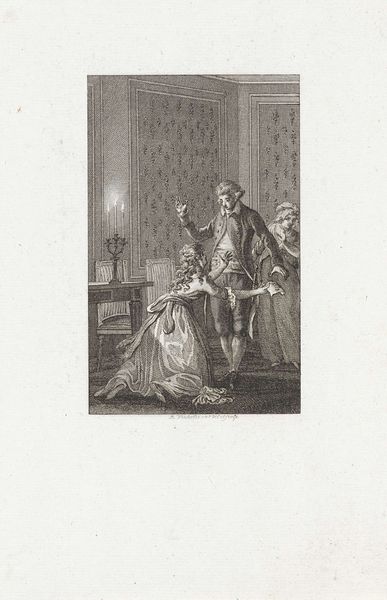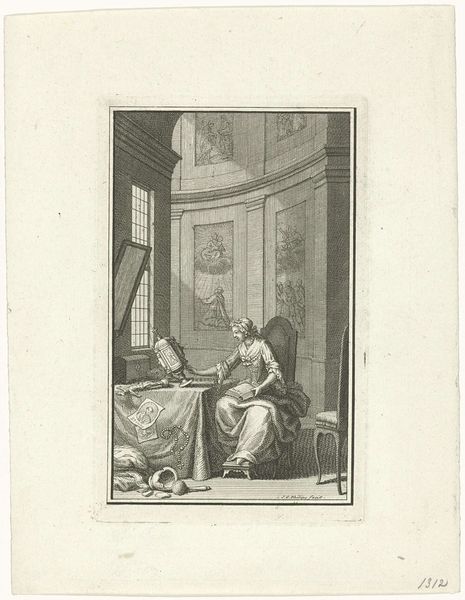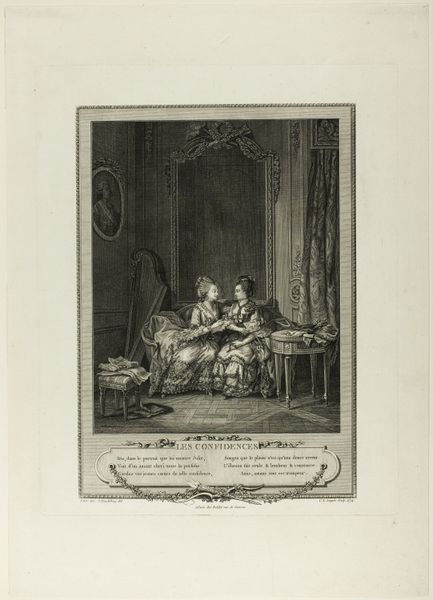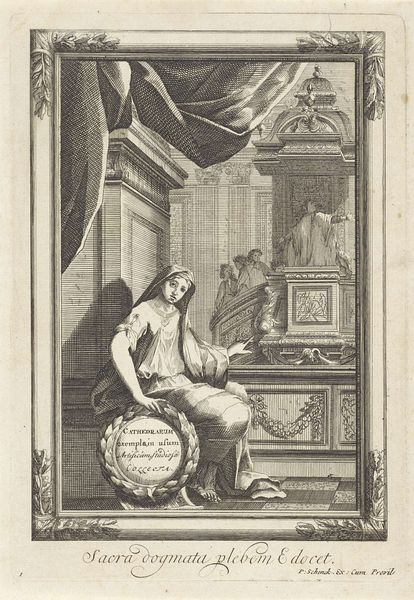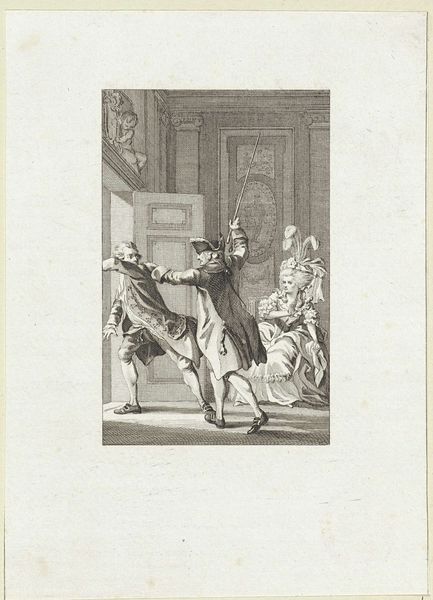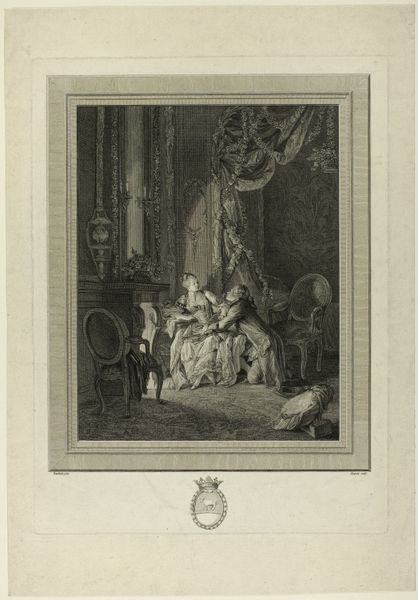
drawing, ink, engraving
#
portrait
#
drawing
#
narrative-art
#
baroque
#
pen drawing
#
pen illustration
#
pen sketch
#
old engraving style
#
ink
#
genre-painting
#
history-painting
#
engraving
Dimensions: height 132 mm, width 87 mm
Copyright: Rijks Museum: Open Domain
Curator: Before us is a work titled "Man kneeling at the sickbed of a woman," a pen and ink drawing created between 1722 and 1784 by Simon Fokke. It’s currently held in the Rijksmuseum. Editor: My immediate impression is of intense sorrow. The monochromatic palette focuses attention on form, line, and the emotional weight of the scene. The stark contrast amplifies the feeling of desolation. Curator: Yes, the engraver Fokke utilizes the visual language typical of the 18th century to create a narrative. The texture is incredible. The hatching technique, where lines are closely spaced to create areas of shadow, really builds depth despite the minimalist approach. Think of the material limitations – ink, paper, a burin perhaps - used for creating a widely reproducible image aimed to reach a broad audience. Editor: Observe the composition, however. The lines guide our eyes directly to the woman, lying in bed, but our gaze quickly goes down to the man who has collapsed in a praying stance at the bedside. This generates a powerful, almost overwhelming dynamic. Curator: The choice of subject is telling of the social circumstances that fostered the artist’s labor. What story does Fokke aim to tell, and what expectations were placed on this print? Think of this interior and the social rituals of grief, health, and the representation of these sentiments as a material object. The image participates in constructing and solidifying codes of conduct. Editor: I agree with you but cannot ignore the pure visual tension established by the spatial relationship, the implied movement within a contained domestic scene, and what those formal tensions communicate. Curator: The power in the visual tension results from its effective ability to portray emotions dictated by its material and labor contexts. How it achieves what you mention is only possible when considered within its process. Editor: I see what you are saying and yet find this image to be deeply affecting beyond the history. It evokes a sense of loss so potently through very calculated applications of form. Curator: Absolutely. It seems our dialogue demonstrates how both formalism and a materialist view give us different, and ultimately richer, perspectives on experiencing art like Fokke's engraving.
Comments
No comments
Be the first to comment and join the conversation on the ultimate creative platform.
